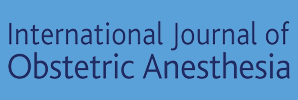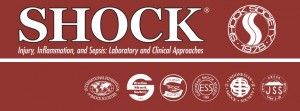Biblio du mois : Mars/Avril 2016
Au mois de Pâques, on est gourmand … Et bien pour la Biblio de l’AJAR aussi !
Au programme de savoureuses études sur la nutrition des tout petits et du coeur en abondance.
Sans oublier les recommandations américaines sur la gestion de la douleur pour ceux qui n’ont pas eu de chocolat…
Vous retrouverez également un petit bonus sur les avancées physiologiques concernant la ventilation (dédicace à ceux qui ont couru la ColorRun avec l’AJAR).
Nutrition parentérale précoce versus tardive en Réanimation pédiatrique : pas d’urgence ?
http://www.nejm.org/doi/full/10.1056/NEJMoa1514762
Fivez et al.
BACKGROUND
Recent trials have questioned the benefit of early parenteral nutrition in adults. The effect of early parenteral nutrition on clinical outcomes in critically ill children is unclear.
METHODS
We conducted a multicenter, randomized, controlled trial involving 1440 critically ill children to investigate whether withholding parenteral nutrition for 1 week (i.e., providing late parenteral nutrition) in the pediatric intensive care unit (ICU) is clinically superior to providing early parenteral nutrition. Fluid loading was similar in the two groups. The two primary end points were new infection acquired during the ICU stay and the adjusted duration of ICU dependency, as assessed by the number of days in the ICU and as time to discharge alive from ICU. For the 723 patients receiving early parenteral nutrition, parenteral nutrition was initiated within 24 hours after ICU admission, whereas for the 717 patients receiving late parenteral nutrition, parenteral nutrition was not provided until the morning of the 8th day in the ICU. In both groups, enteral nutrition was attempted early and intravenous micronutrients were provided.
RESULTS
Although mortality was similar in the two groups, the percentage of patients with a new infection was 10.7% in the group receiving late parenteral nutrition, as compared with 18.5% in the group receiving early parenteral nutrition (adjusted odds ratio, 0.48; 95% confidence interval [CI], 0.35 to 0.66). The mean (±SE) duration of ICU stay was 6.5±0.4 days in the group receiving late parenteral nutrition, as compared with 9.2±0.8 days in the group receiving early parenteral nutrition; there was also a higher likelihood of an earlier live discharge from the ICU at any time in the late-parenteral-nutrition group (adjusted hazard ratio, 1.23; 95% CI, 1.11 to 1.37). Late parenteral nutrition was associated with a shorter duration of mechanical ventilatory support than was early parenteral nutrition (P=0.001), as well as a smaller proportion of patients receiving renal-replacement therapy (P=0.04) and a shorter duration of hospital stay (P=0.001). Late parenteral nutrition was also associated with lower plasma levels of γ-glutamyltransferase and alkaline phosphatase than was early parenteral nutrition (P=0.001 and P=0.04, respectively), as well as higher levels of bilirubin (P=0.004) and C-reactive protein (P=0.006).
CONCLUSIONS
In critically ill children, withholding parenteral nutrition for 1 week in the ICU was clinically superior to providing early parenteral nutrition.
Pontage coronarien : J’arrête ou continue l’Aspirine en pré-opératoire ?
http://www.nejm.org/doi/full/10.1056/NEJMoa1507688
Myles et al.
BACKGROUND
Most patients with coronary artery disease receive aspirin for primary or secondary prevention of myocardial infarction, stroke, and death. Aspirin poses a risk of bleeding in patients undergoing surgery, but it is unclear whether aspirin should be stopped before coronary artery surgery.
METHODS
We used a 2-by-2 factorial trial design to randomly assign patients who were scheduled to undergo coronary artery surgery and were at risk for perioperative complications to receive aspirin or placebo and tranexamic acid or placebo. The results of the aspirin trial are reported here. Patients were randomly assigned to receive 100 mg of aspirin or matched placebo preoperatively. The primary outcome was a composite of death and thrombotic complications (nonfatal myocardial infarction, stroke, pulmonary embolism, renal failure, or bowel infarction) within 30 days after surgery.
RESULTS
Among 5784 eligible patients, 2100 were enrolled; 1047 were randomly assigned to receive aspirin and 1053 to receive placebo. A primary outcome event occurred in 202 patients in the aspirin group (19.3%) and in 215 patients in the placebo group (20.4%) (relative risk, 0.94; 95% confidence interval, 0.80 to 1.12; P=0.55). Major hemorrhage leading to reoperation occurred in 1.8% of patients in the aspirin group and in 2.1% of patients in the placebo group (P=0.75), and cardiac tamponade occurred at rates of 1.1% and 0.4%, respectively (P=0.08).
CONCLUSIONS
Among patients undergoing coronary artery surgery, the administration of preoperative aspirin resulted in neither a lower risk of death or thrombotic complications nor a higher risk of bleeding than that with placebo
Intérêt des anti-arythmiques dans les ACR à rythme choquable extra-hospitalier ?
Kudenchuk et al.
BACKGROUND
Antiarrhythmic drugs are used commonly in out-of-hospital cardiac arrest for shock-refractory ventricular fibrillation or pulseless ventricular tachycardia, but without proven survival benefit.
METHODS
In this randomized, double-blind trial, we compared parenteral amiodarone, lidocaine, and saline placebo, along with standard care, in adults who had nontraumatic out-of-hospital cardiac arrest, shock-refractory ventricular fibrillation or pulseless ventricular tachycardia after at least one shock, and vascular access. Paramedics enrolled patients at 10 North American sites. The primary outcome was survival to hospital discharge; the secondary outcome was favorable neurologic function at discharge. The per-protocol (primary analysis) population included all randomly assigned participants who met eligibility criteria and received any dose of a trial drug and whose initial cardiac-arrest rhythm of ventricular fibrillation or pulseless ventricular tachycardia was refractory to shock.
RESULTS
In the per-protocol population, 3026 patients were randomly assigned to amiodarone (974), lidocaine (993), or placebo (1059); of those, 24.4%, 23.7%, and 21.0%, respectively, survived to hospital discharge. The difference in survival rate for amiodarone versus placebo was 3.2 percentage points (95% confidence interval [CI], −0.4 to 7.0; P=0.08); for lidocaine versus placebo, 2.6 percentage points (95% CI, −1.0 to 6.3; P=0.16); and for amiodarone versus lidocaine, 0.7 percentage points (95% CI, −3.2 to 4.7; P=0.70). Neurologic outcome at discharge was similar in the three groups. There was heterogeneity of treatment effect with respect to whether the arrest was witnessed (P=0.05); active drugs were associated with a survival rate that was significantly higher than the rate with placebo among patients with bystander-witnessed arrest but not among those with unwitnessed arrest. More amiodarone recipients required temporary cardiac pacing than did recipients of lidocaine or placebo.
CONCLUSIONS
Overall, neither amiodarone nor lidocaine resulted in a significantly higher rate of survival or favorable neurologic outcome than the rate with placebo among patients with out-of-hospital cardiac arrest due to initial shock-refractory ventricular fibrillation or pulseless ventricular tachycardia.
Revue sur l’ischémie mésentérique
http://www.nejm.org/doi/full/10.1056/NEJMra1503884
Clair et al.
Rôle neuroprotecteur du Xenon dans les ACR extra-hospitaliers ?
http://www.ncbi.nlm.nih.gov/pubmed/26978207
Laitio et al.
Importance
Evidence from preclinical models indicates that xenon gas can prevent the development of cerebral damage after acute global hypoxic-ischemic brain injury but, thus far, these putative neuroprotective properties have not been reported in human studies.
Objective
To determine the effect of inhaled xenon on ischemic white matter damage assessed with magnetic resonance imaging (MRI).
Design, Setting, and Participants
A randomized single-blind phase 2 clinical drug trial conducted between August 2009 and March 2015 at 2 multipurpose intensive care units in Finland. One hundred ten comatose patients (aged 24-76 years) who had experienced out-of-hospital cardiac arrest were randomized.
Interventions
Patients were randomly assigned to receive either inhaled xenon combined with hypothermia (33°C) for 24 hours (n = 55 in the xenon group) or hypothermia treatment alone (n = 55 in the control group).
Main Outcomes and Measures
The primary end point was cerebral white matter damage as evaluated by fractional anisotropy from diffusion tensor MRI scheduled to be performed between 36 and 52 hours after cardiac arrest. Secondary end points included neurological outcome assessed using the modified Rankin Scale (score 0 [no symptoms] through 6 [death]) and mortality at 6 months.
Results
Among the 110 randomized patients (mean age, 61.5 years; 80 men [72.7%]), all completed the study. There were MRI data from 97 patients (88.2%) a median of 53 hours (interquartile range [IQR], 47-64 hours) after cardiac arrest. The mean global fractional anisotropy values were 0.433 (SD, 0.028) in the xenon group and 0.419 (SD, 0.033) in the control group. The age-, sex-, and site-adjusted mean global fractional anisotropy value was 3.8% higher (95% CI, 1.1%-6.4%) in the xenon group (adjusted mean difference, 0.016 [95% CI, 0.005-0.027], P = .006). At 6 months, 75 patients (68.2%) were alive. Secondary end points at 6 months did not reveal statistically significant differences between the groups. In ordinal analysis of the modified Rankin Scale, the median (IQR) value was 1 (1-6) in the xenon group and 1 (0-6) in the control group (median difference, 0 [95% CI, 0-0]; P = .68). The 6-month mortality rate was 27.3% (15/55) in the xenon group and 34.5% (19/55) in the control group (adjusted hazard ratio, 0.49 [95% CI, 0.23-1.01]; P = .053).
Conclusions and Relevance
Among comatose survivors of out-of-hospital cardiac arrest, inhaled xenon combined with hypothermia compared with hypothermia alone resulted in less white matter damage as measured by fractional anisotropy of diffusion tensor MRI. However, there was no statistically significant difference in neurological outcomes or mortality at 6 months. These preliminary findings require further evaluation in an adequately powered clinical trial designed to assess clinical outcomes associated with inhaled xenon among survivors of out-of-hospital cardiac arrest.
Absence d’effet protecteur contre l’insuffisance rénale aigue des statines en pré-opératoire de chirurgie cardiaque ?
http://jama.jamanetwork.com/article.aspx?articleid=2492851
Billings IV et al.
Importance
Statins affect several mechanisms underlying acute kidney injury (AKI).
Objective
To test the hypothesis that short-term high-dose perioperative atorvastatin would reduce AKI following cardiac surgery.
Design, Setting, and Participants
Double-blinded, placebo-controlled, randomized clinical trial of adult cardiac surgery patients conducted from November 2009 to October 2014 at Vanderbilt University Medical Center.
Interventions
Patients naive to statin treatment (n = 199) were randomly assigned 80 mg of atorvastatin the day before surgery, 40 mg of atorvastatin the morning of surgery, and 40 mg of atorvastatin daily following surgery (n = 102) or matching placebo (n = 97). Patients already taking a statin prior to study enrollment (n = 416) continued taking the preenrollment statin until the day of surgery, were randomly assigned 80 mg of atorvastatin the morning of surgery and 40 mg of atorvastatin the morning after (n = 206) or matching placebo (n = 210), and resumed taking the previously prescribed statin on postoperative day 2.
Main Outcomes and Measures
Acute kidney injury defined as an increase of 0.3 mg/dL in serum creatinine concentration within 48 hours of surgery (Acute Kidney Injury Network criteria).
Results
The data and safety monitoring board recommended stopping the group naive to statin treatment due to increased AKI among these participants with chronic kidney disease (estimated glomerular filtration rate <60 mL/min/1.73 m2) receiving atorvastatin. The board later recommended stopping for futility after 615 participants (median age, 67 years; 188 [30.6%] were women; 202 [32.8%] had diabetes) completed the study. Among all participants (n = 615), AKI occurred in 64 of 308 (20.8%) in the atorvastatin group vs 60 of 307 (19.5%) in the placebo group (relative risk [RR], 1.06 [95% CI, 0.78 to 1.46]; P = .75). Among patients naive to statin treatment (n = 199), AKI occurred in 22 of 102 (21.6%) in the atorvastatin group vs 13 of 97 (13.4%) in the placebo group (RR, 1.61 [0.86 to 3.01]; P = .15) and serum creatinine concentration increased by a median of 0.11 mg/dL (10th-90th percentile, −0.11 to 0.56 mg/dL) in the atorvastatin group vs by a median of 0.05 mg/dL (10th-90th percentile, −0.12 to 0.33 mg/dL) in the placebo group (mean difference, 0.08 mg/dL [95% CI, 0.01 to 0.15 mg/dL]; P = .007). Among patients already taking a statin (n = 416), AKI occurred in 42 of 206 (20.4%) in the atorvastatin group vs 47 of 210 (22.4%) in the placebo group (RR, 0.91 [0.63 to 1.32]; P = .63).
Conclusions and Relevance
Among patients undergoing cardiac surgery, high-dose perioperative atorvastatin treatment compared with placebo did not reduce the risk of AKI overall, among patients naive to treatment with statins, or in patients already taking a statin. These results do not support the initiation of statin therapy to prevent AKI following cardiac surgery.
Effet de la dexmetomidine chez les patients agités en réa sur leur durée de VM
http://jama.jamanetwork.com/article.aspx?articleid=2503421
DahLIA Group
Importance
Effective therapy has not been established for patients with agitated delirium receiving mechanical ventilation.
Objective
To determine the effectiveness of dexmedetomidine when added to standard care in patients with agitated delirium receiving mechanical ventilation.
Design, Setting, and Participants
The Dexmedetomidine to Lessen ICU Agitation (DahLIA) study was a double-blind, placebo-controlled, parallel-group randomized clinical trial involving 74 adult patients in whom extubation was considered inappropriate because of the severity of agitation and delirium. The study was conducted at 15 intensive care units in Australia and New Zealand from May 2011 until December 2013. Patients with advanced dementia or traumatic brain injury were excluded.
Interventions
Bedside nursing staff administered dexmedetomidine (or placebo) initially at a rate of 0.5 µg/kg/h and then titrated to rates between 0 and 1.5 µg/kg/h to achieve physician-prescribed sedation goals. The study drug or placebo was continued until no longer required or up to 7 days. All other care was at the discretion of the treating physician.
Main Outcomes and Measures
Ventilator-free hours in the 7 days following randomization. There were 21 reported secondary outcomes that were defined a priori.
Results
Of the 74 randomized patients (median age, 57 years; 18 [24%] women), 2 withdrew consent later and 1 was found to have been randomized incorrectly, leaving 39 patients in the dexmedetomidine group and 32 patients in the placebo group for analysis. Dexmedetomidine increased ventilator-free hours at 7 days compared with placebo (median, 144.8 hours vs 127.5 hours, respectively; median difference between groups, 17.0 hours [95% CI, 4.0 to 33.2 hours]; P = .01). Among the 21 a priori secondary outcomes, none were significantly worse with dexmedetomidine, and several showed statistically significant benefit, including reduced time to extubation (median, 21.9 hours vs 44.3 hours with placebo; median difference between groups, 19.5 hours [95% CI, 5.3 to 31.1 hours]; P < .001) and accelerated resolution of delirium (median, 23.3 hours vs 40.0 hours; median difference between groups, 16.0 hours [95% CI, 3.0 to 28.0 hours]; P = .01). Using hierarchical Cox modeling to adjust for imbalanced baseline characteristics, allocation to dexmedetomidine was significantly associated with earlier extubation (hazard ratio, 0.47 [95% CI, 0.27-0.82]; P = .007).
Conclusions and Relevance
Among patients with agitated delirium receiving mechanical ventilation in the intensive care unit, the addition of dexmedetomidine to standard care compared with standard care alone (placebo) resulted in more ventilator-free hours at 7 days. The findings support the use of dexmedetomidine in patients such as these.
Checklist en Réanimation : inutile ?
http://jama.jamanetwork.com/article.aspx?articleid=2512785
BRICnet group
Importance
The effectiveness of checklists, daily goal assessments, and clinician prompts as quality improvement interventions in intensive care units (ICUs) is uncertain.
Objective To determine whether a multifaceted quality improvement intervention reduces the mortality of critically ill adults.
Design, Setting, and Participants
This study had 2 phases. Phase 1 was an observational study to assess baseline data on work climate, care processes, and clinical outcomes, conducted between August 2013 and March 2014 in 118 Brazilian ICUs. Phase 2 was a cluster randomized trial conducted between April and November 2014 with the same ICUs. The first 60 admissions of longer than 48 hours per ICU were enrolled in each phase.
Interventions
Intensive care units were randomized to a quality improvement intervention, including a daily checklist and goal setting during multidisciplinary rounds with follow-up clinician prompting for 11 care processes, or to routine care.
Main Outcomes and Measures
In-hospital mortality truncated at 60 days (primary outcome) was analyzed using a random-effects logistic regression model, adjusted for patients’ severity and the ICU’s baseline standardized mortality ratio. Exploratory secondary outcomes included adherence to care processes, safety climate, and clinical events.
Results
A total of 6877 patients (mean age, 59.7 years; 3218 [46.8%] women) were enrolled in the baseline (observational) phase and 6761 (mean age, 59.6 years; 3098 [45.8%] women) in the randomized phase, with 3327 patients enrolled in ICUs (n = 59) assigned to the intervention group and 3434 patients in ICUs (n = 59) assigned to routine care. There was no significant difference in in-hospital mortality between the intervention group and the usual care group, with 1096 deaths (32.9%) and 1196 deaths (34.8%), respectively (odds ratio, 1.02; 95% CI, 0.82-1.26; P = .88). Among 20 prespecified secondary outcomes not adjusted for multiple comparisons, 6 were significantly improved in the intervention group (use of low tidal volumes, avoidance of heavy sedation, use of central venous catheters, use of urinary catheters, perception of team work, and perception of patient safety climate), whereas there were no significant differences between the intervention group and the control group for 14 outcomes (ICU mortality, central line–associated bloodstream infection, ventilator-associated pneumonia, urinary tract infection, mean ventilator-free days, mean ICU length of stay, mean hospital length of stay, bed elevation to ≥30°, venous thromboembolism prophylaxis, diet administration, job satisfaction, stress reduction, perception of management, and perception of working conditions).
Conclusions and Relevance
Among critically ill patients treated in ICUs in Brazil, implementation of a multifaceted quality improvement intervention with daily checklists, goal setting, and clinician prompting did not reduce in-hospital mortality.
Revue sur les Hématomes sous-duraux
http://link.springer.com/article/10.1007%2Fs12028-015-0194-x
Huang et al.
Corrélation entre la prise de Benzodiazépines chez les > 65ans et la survenue d’une démence ou d’un déclin cognitif plus rapide ?
http://www.bmj.com/content/352/bmj.i90.long
Gray et al.
OBJECTIVE
To determine whether higher cumulative use of benzodiazepines is associated with a higher risk of dementia or more rapid cognitive decline.
DESIGN
Prospective population based cohort.
SETTING
Integrated healthcare delivery system, Seattle, Washington.
PARTICIPANTS
3434 participants aged ≥65 without dementia at study entry. There were two rounds of recruitment (1994-96 and 2000-03) followed by continuous enrollment beginning in 2004.
MAIN OUTCOMES MEASURES
The cognitive abilities screening instrument (CASI) was administered every two years to screen for dementia and was used to examine cognitive trajectory. Incident dementia and Alzheimer’s disease were determined with standard diagnostic criteria. Benzodiazepine exposure was defined from computerized pharmacy data and consisted of the total standardized daily doses (TSDDs) dispensed over a 10 year period (a rolling window that moved forward in time during follow-up). The most recent year was excluded because of possible use for prodromal symptoms. Multivariable Cox proportional hazard models were used to examine time varying use of benzodiazepine and dementia risk. Analyses of cognitive trajectory used linear regression models with generalized estimating equations.
RESULTS
Over a mean follow-up of 7.3 years, 797 participants (23.2%) developed dementia, of whom 637 developed Alzheimer’s disease. For dementia, the adjusted hazard ratios associated with cumulative benzodiazepine use compared with non-use were 1.25 (95% confidence interval 1.03 to 1.51) for 1-30 TSDDs; 1.31 (1.00 to 1.71) for 31-120 TSDDs; and 1.07 (0.82 to 1.39) for ≥121 TSDDs. Results were similar for Alzheimer’s disease. Higher benzodiazepine use was not associated with more rapid cognitive decline.
CONCLUSION
The risk of dementia is slightly higher in people with minimal exposure to benzodiazepines but not with the highest level of exposure. These results do not support a causal association between benzodiazepine use and dementia.
Bénéfice de la dexmédétomidine (en périneuroal ou en voie intraveineuse) en ALR dans le bloc interscalénique ?
http://anesthesiology.pubs.asahq.org/article.aspx?articleid=2475695
Abdallah et al.
Revue sur le calcium ionisé en Réanimation
http://www.sciencedirect.com/science/article/pii/S0012369215002937
Bénéfice de l’administration prophylactique de néosynéphrine avant rachi-anesthésie pour césarienne ?
http://linkinghub.elsevier.com/retrieve/pii/S0959-289X(15)00120-X
Lee et al.
BACKGROUND
Continuously infused phenylephrine is frequently used to reduce the incidence of hypotension in women undergoing cesareansection under spinal anesthesia, but less is known about the prophylactic bolus method. We evaluated three prophylactic bolus doses ofphenylephrine during low-dose spinal anesthesia for cesarean section.
METHODS
One-hundred-and-eighty-four patients were randomized to receive 0.9% saline 2mL (Control Group) or phenylephrine 1.0μg/kg (PHE1 Group), 1.5μg/kg (PHE1.5 Group), or 2.0μg/kg (PHE2 Group) immediately after induction of combined spinal-epidural anesthesia. Maternal blood pressure and heart rate were recorded at 1-min intervals until delivery. Hypotension, defined as systolic blood pressure <80% of baseline, was treated with rescue doses of phenylephrine 100μg at 1-min intervals until hypotension resolved. The incidence of nausea, vomiting, bradycardia, and hypertension, as well as Apgar scores and umbilical blood gases, were recorded.
RESULTS
The incidence of hypotension was 71.7% (33/46) in the Control Group, 68.9% (31/45) in the PHE1 Group, 37.0% (17/46) in the PHE1.5 Group and 45.7% (21/46) in the PHE2 Group (P=0.001). The total rescue dose of phenylephrine was greater in the Control Group than those in the PHE1.5 Group (P<0.05) and PHE2 Group (P<0.05). The incidence of hypertension increased as the dose of prophylactic phenylephrine increased (P<0.001) and was highest in the PHE2 group (37%). Other variables did not differ among the four groups.
CONCLUSIONS
Under the conditions of this study, prophylactic bolus injection of phenylephrine 1.5μg/kg was a suitable alternative method for reducing the incidence of hypotension during low-dose spinal anesthesia for cesarean section.
Le fribrinogène et les D-dimères comme critères prédictifs de mortalité à l’arrivée chez le polytraumatisé ?
Hayakawa et al.
Revue sur la dysfonction endothéliale dans le sepsis
ADQI XIV group
Quel plan échographique pour la pose de KTc ?
http://bja.oxfordjournals.org/cgi/pmidlookup?view=long&pmid=26705350
Batllori et al.
Les 10 avancées physiologiques qui ont amélioré la prise en charge du SDRA
http://link.springer.com/article/10.1007/s00134-016-4320-9
Brochard et al.
Le cadeau de l’AJAR : Ten reasons to be more attentive to patients when setting the ventilator
Revue sur le sommeil en réanimation des patients sous ventilation mécanique
Rittayamai et al.
Cible de Pression artérielle dans les états de choc ?
http://link.springer.com/article/10.1007/s00134-016-4237-3
Lamontagne et al.
Revue sur la dysfonction plaquettaire dans le sepsis
Pigozzi et al.
Recommandations de la société américaine sur la gestion de la douleur post opératoire chez l’adulte et l’enfant
http://www.jpain.org/article/S1526-5900(15)00995-5/abstract
American Pain Society





 17 avril 2016
17 avril 2016










